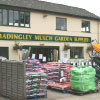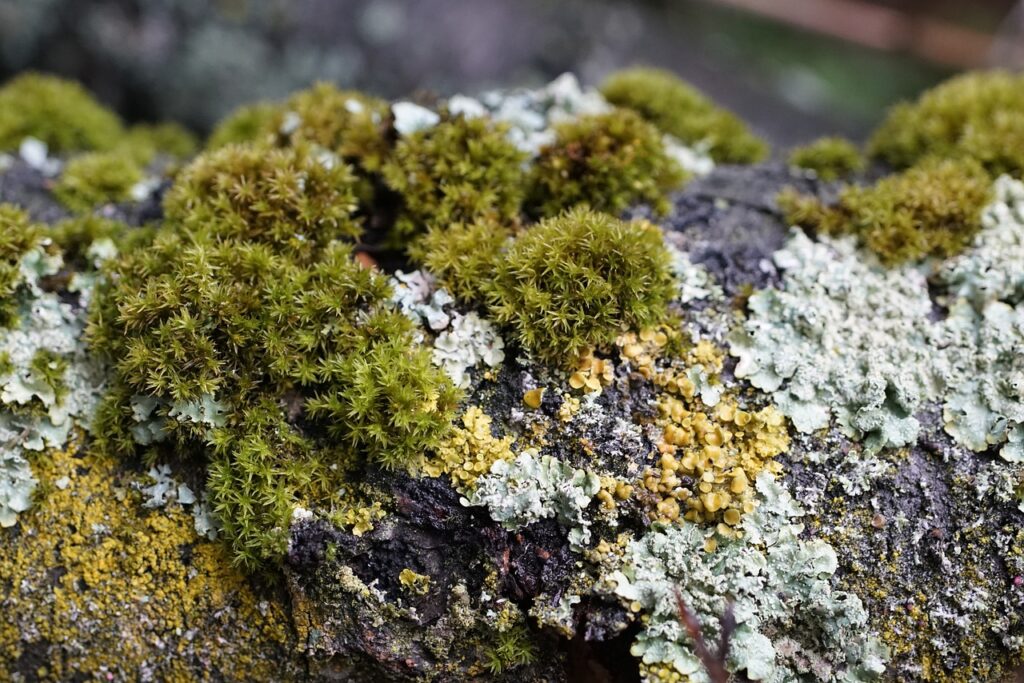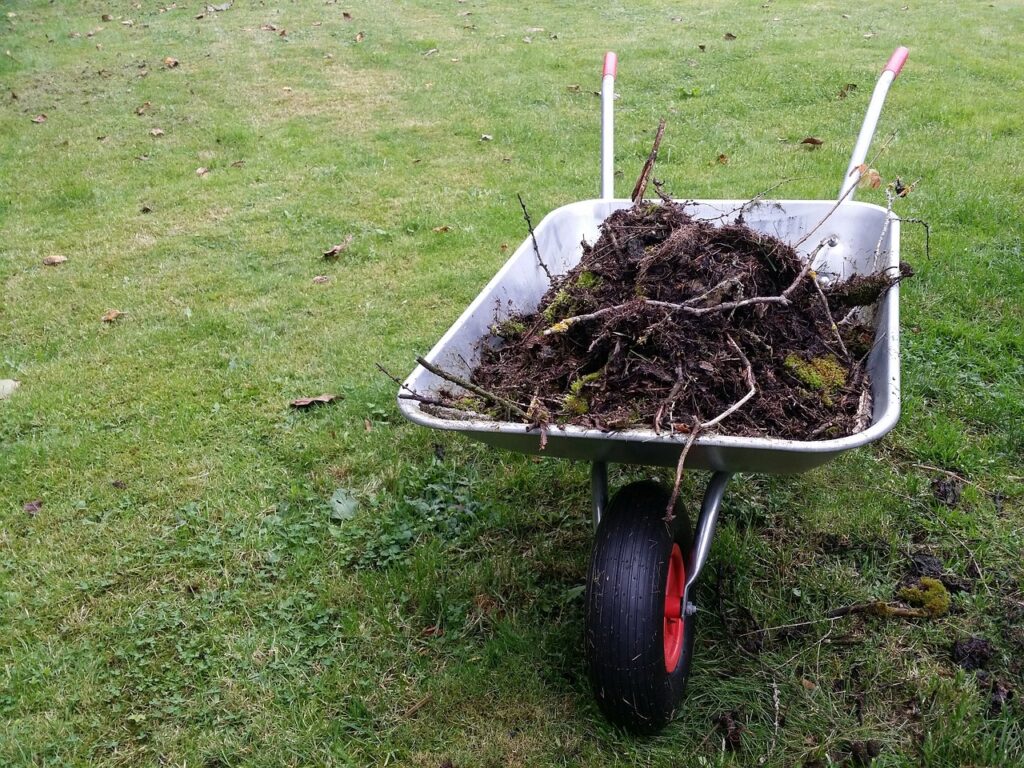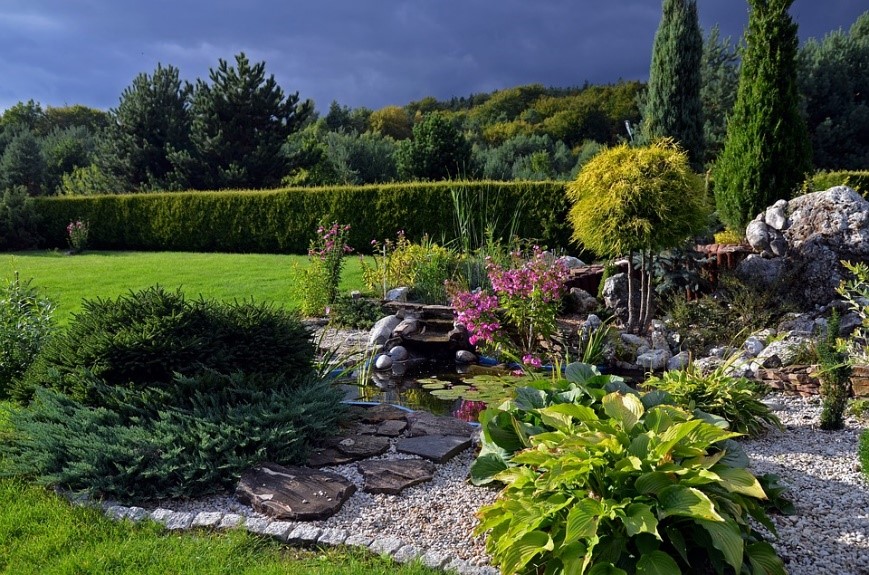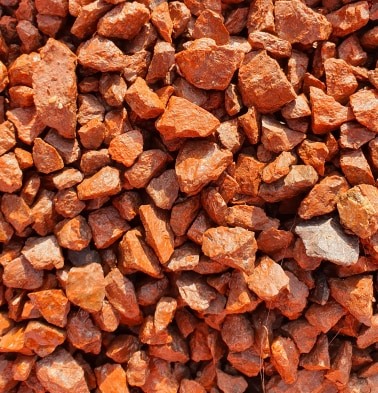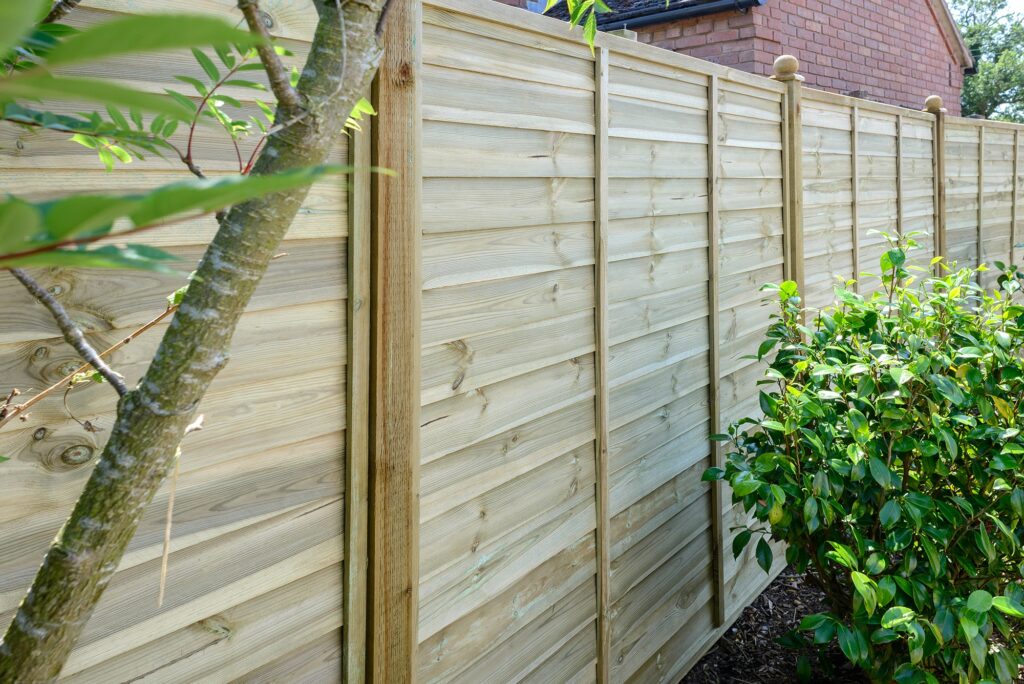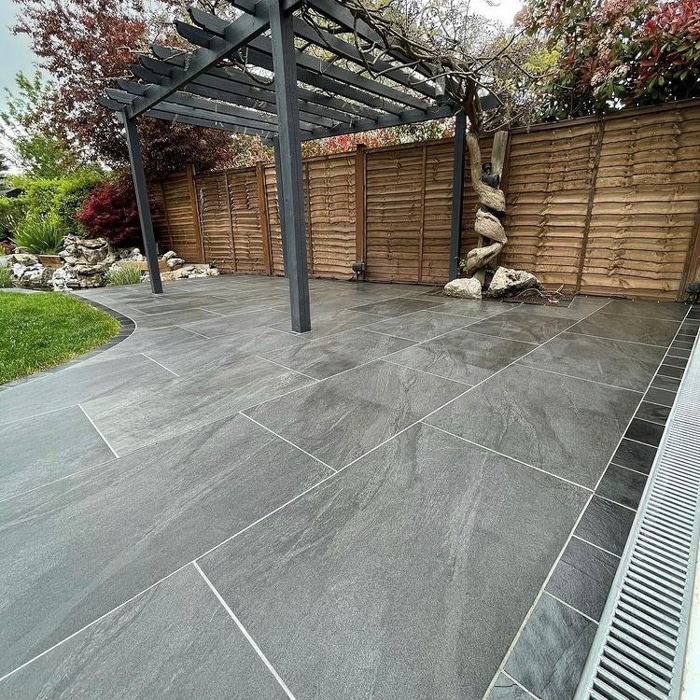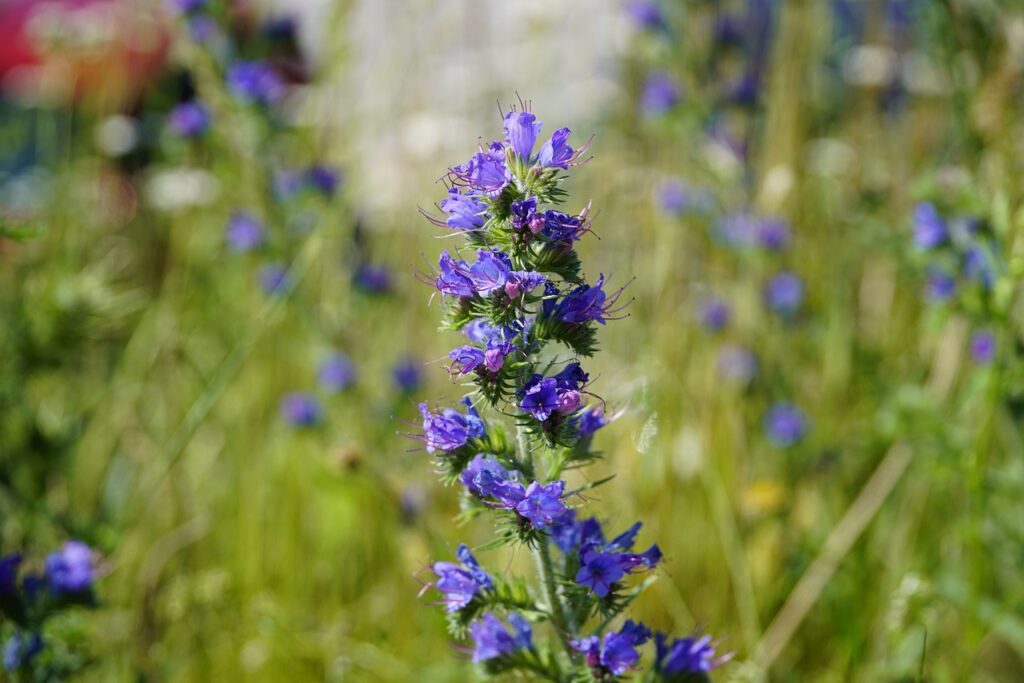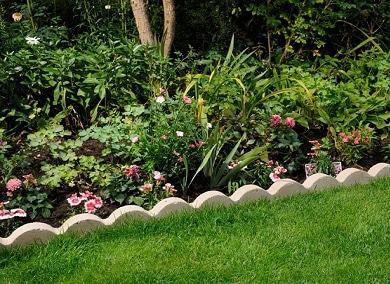Top Trends from the 2024 RHS Chelsea Flower Show
One of the biggest events in the UK’s gardening calendar, the RHS Chelsea Flower Show, has just taken place in London. Here Madingley Mulch, who supply DIY building materials in Cambridge and the surrounding area, analyse some of the leading garden trends from the latest annual show.
Imaginative Water Features
This year, many of the gardens had inbuilt water features. The WaterAid Garden drew water down funnels into a shallow channel and into a series of ponds. And the Flood: Re Flood Resilient Garden used a series of galvanised water tanks (at varying heights) with inbuilt spouts.
And even this year’s Best Balcony and Container Garden made full use of water in the middle of some lush greenery. The Ecotherapy Garden used a series of waterspouts and pools which fed through into a final plunge pool. The idea was that the users benefit not just from a cold dip, but also from the soothing sound of the water.
All these features – just like a common-or-garden water butt – lessened the need for any manual watering of plants. This is an important consideration given the extremes of climate the UK and the wider world has seen over recent years.
Low-Level Lighting
Although artificial light isn’t particularly eco-friendly, there are circumstances in which it can be helpful. The National Autistic Society’s Garden made use of low-level lighting to create safe steps at night through a garden which evolves from wetland meadow to birch woodland.
And the Boodles National Gallery Garden, which won the Best Construction Award in the Sanctuary Garden category, used colour-coordinated path lights to match the planting scheme.
The Garden is Still a Place to Relax
The winner of the Best Show Garden was Muscular Dystrophy UK, with their Forest Bathing Garden. More than 40 trees were used to create a forest-like atmosphere of calm which would benefit MD sufferers, their family and friends, as well as doctors and other clinicians. Reclaimed hard landscaping materials, including slate, tiles and pavers, meant it was a sustainable project as well.
And the Best Sanctuary Garden was the Burma Skincare’s Spirit of Partnership Garden. The garden made clever use of bark, moss and lichens, pictured, alongside some lush greenery. It tells the story of a partnership which supports Burmese healthcare workers treating adults and children with debilitating skin conditions.
All the plants in this garden are native to Myanmar, but they can be grown in the UK; many of them are wildlife-friendly and will help support birds, bees and other insects.
DIY Building Materials in Cambridge with Madingley Mulch
Whatever type of garden you are looking for, whether it’s been inspired by the RHS Chelsea Flower Show or not, Madingley Mulch should be able to help. We supply a wide variety of mulches, barks, soil conditioners and composts to help your plants thrive.
Our exclusive soil conditioners – which we supply to customers in Hertfordshire, Essex and Suffolk as well as Cambridgeshire – include Tony’s Tonic and Denise’s Delight. The latter is a natural soil conditioner with an exclusive mix of Black Fen soil, horse manure, wood shavings and other plant nutrients.
We also stock a variety of hard landscaping materials, including building sand and ballast, plus a selection of gravels, round stones, shingle, decorative stones and pebbles.
For more information check out our online shop here. You can also call us on 01954 212144 with your queries.
The RHS Chelsea Flower Show 2024 Main Award Winners:
- Best Construction Award (Show Garden) – Terrence Higgins Trust Bridge to 2030 Garden
- Best Construction Award (Sanctuary Garden) – The Boodles Garden, built by Gadd Brothers Trees and Landscapes
- Best Balcony and Container Garden – The Ecotherapy Garden, designed by Tom Bannister
- Best All About Plants Garden – The Size of Wales Garden, designed by Dan Bristow.
Top Tips on How to Prepare Your Garden for Landscaping
As we reach summer, and the weather finally starts to dry out a little, it’s an opportune time to carry out any landscaping projects in your garden.
However, whether you’re planning to lay paving slabs, decking or build some raised beds, you are likely to need to carry out a certain amount of preparation in order to ensure that your garden is ready for the job.
As experts when it comes to landscaping supplies and topsoil in Suffolk, Essex and Cambridgeshire – here are our top tips for preparing your garden for a landscaping job.
Measure Up
Many gardens have slopes which should be levelled out before plants can be grown. Even if you aren’t looking to grow anything new, it’s a good idea to get rid of any slopes regardless, as often they lead to muddy or wet patches and puddles which don’t drain well after periods of heavy rain.
And, if you want to lay a patio or decking, you will definitely need a level surface.
The best way of marking the level of your garden is to have some marker stakes with some string – stretch the string out straight between the stakes at the height you want your soil to be (a spirit level may help here).
Level Up (or Down)
If you’re looking to level out a small area, you may be able to do the heavy work yourself with a spade, shovel, tiller or rotavator.
If it’s a big area, you may be better off getting a professional in to carry out the work – while it may end up a bit more expensive you will have the assurance that it will be carried out to a professional standard.
Once you have identified and marked out the area you want to level up, dig down to a depth of around 20cm and mix up the soil with a rake – this will improve the soil’s texture and help provide healthier base for any new plants you want to grow.
You can then add some topsoil to level everything up (or remove soil from other parts of the garden if you’re levelling up in one part, and down in another).
Remove Weeds
Removing weeds is something you need to keep on top of at all times – not just in project preparation but also later on. Even if you fully clear your garden of weeds, you will quickly find them sprouting up again after a week or so.
Make sure all parts of the garden are as free as possible from these unwanted plants – and that means removing them with forks, trowels and other garden tools – and not just from any area which you are levelling up. It can sometimes seem like a daunting task, but your garden will look all the better for it.
In the longer term, weed suppressing membranes are a good idea if you want to grow new plants in the landscaped area – as is mulch as these will make it much harder for the weeds to germinate (as well as allowing your own plants to survive and flourish). Weed membranes are also a great idea for placing underneath areas of stones, pebbles or aggregate to stop weeds from poking through.
Keep Everything Flat
As we’ve already mentioned, it’s usually important that every surface in your garden is as flat as possible (unless you are working with a tiered garden design) – this particularly applies if you are laying down a patio.
You can tamp down the soil surface with the back of a space, although a roller is better. If you are laying down a patio, a layer of sand or hardcore on the top may help maintain the levelness over time.
Whatever you do, you should let the levelled area settle for a few days before embarking on the next stage of the project – whether that’s to lay new turf, plant new flowers or shrubs, or lay down some patio or paving slabs.
If you are laying down some turf, check out our previous blog here for some helpful advice.
Madingley Mulch – Topsoil and Turf Suppliers in Cambridge and across East Anglia
At Madingley Mulch we stock a range of tools and other products to help you with any landscaping project. Check out our online shop here for our range of tools – these include spades, shovels and wheelbarrows to help with any heavy work.
If you are laying down a patio, then our range of paving slabs can be found here – you should be able to find a colour or style that suits you. And our selection of high-quality new turf can be found here – we are one of the leading turf suppliers in Cambridge and the surrounding area.
Remember, we can not only supply topsoil to customers in Suffolk, Essex, Bedfordshire and our home county of Cambridgeshire, we can deliver it to your door as well – for more details of our delivery services, check out this page.
If you are not sure what product best suits your garden landscaping project, feel free to call us on 01954 212144 and we will be happy to give you some advice.
Five Reasons Why Spent Mushroom Compost is Good For Your Garden
Mushroom compost is one of the many soil conditioners and improvers we stock at our shop on the edge of Cambridge. Here we explain what it is, and how it can benefit gardeners across East Anglia looking to improve the quality of their soil.
What is Spent Mushroom Compost?
Spent mushroom compost is a by-product of the mushroom growing process consisting of composted straw and well-rotted animal manure – usually horse or chicken.
Mushroom farmers can use it for two or three crops – which is why it’s also known as spent mushroom compost. However, it still has some handy uses in gardens up and down the country.
Before it comes to us it is sterilised at high temperature to remove any pests, diseases or weeds. We can then sell it on, secure in the knowledge that it will be beneficial to your garden. But why, and what’s the benefit for gardeners?
It Improves Your Existing Soil Structure
Like other soil conditioners and organic mulches, spent mushroom compost improves the structure of the soil – it effectively makes it easier for air, water and nutrients to get to your plants more easily, aiding the growth of your plants.
It Breaks Up Heavy Soil
Mushroom compost’s organic matter and high levels of nitrogen help to break up heavy soils and loosen clay particles. This is particularly useful for gardeners in Cambridge and across the east of England, as the soil here tends to have a high clay content.
This can be hard on your plants, as clay is heavy, very sticky and quite hard to work with. It is made up of lots of tiny mineral particles which reduce the space for air to circulate – but mushroom-based compost will help solve this problem.
It Boosts Soil Drainage
The organic matter in the compost creates pore spaces in the soil structure which means that any excess water can drain away more easily and ensures that your soil, plants and crops do not become waterlogged.
This has been particularly important in the past few months, given the amount of rain the country – including the Cambridge area – has had.
It Reduces Weed Growth
Again, as with other soil conditioners and mulches, this type of compost can help reduce weed growth (which deprives the plants you do want to thrive of valuable nutrients).
When applied, spent mushroom compost effectively acts as a mulch, providing a physical barrier which prevents any weeds from germinating and growing. Usually, it should be applied to a depth of 2-3 inches (without touching the plants themselves – and our mushroom compost isn’t ideal for planting straight into).
It’s Rich in Nutrients
Although it’s effectively already been used, spent mushroom compost still has plenty of valuable plant nutrients. These include nitrogen, phosphorus and potassium, all of which are essential for plant growth.
As it slowly decomposes, the compost releases these nutrients into the soil, providing a steady supply of food for your plants.
This will enable you to grow a wide range of flowers and vegetables; these include root veg such as onions, potatoes and carrots; leafy greens such as lettuce, spinach and kale; fruit vegetables including tomatoes and peppers; many herbs including basil, parsley and rosemary; and flowers including roses, sunflowers, marigolds, petunias and dahlias.
Mushroom Compost in Cambridge from Madingley Mulch
Our spent mushroom compost can be found in our online shop here.
Remember, we stock a range of other mulches, composts and soil conditioners to customers as far afield as Hertfordshire, Essex and Suffolk as well as our home county of Cambridgeshire. These include Tony’s Tonic and Denise’s Delight, which are both sold exclusively by Madingley Mulch.
Feel free to call us on 01954 212144 if you need any advice on which one is best for your garden, and if you do live a distance away from us, we do offer deliveries which are charged on a sliding scale and are available for all orders in excess of £50. For more details follow this link.
Gardens to Visit in and Around Cambridge
If you need any inspiration for your own garden, then why not combine a visit to our base on the outskirts of Cambridge with a visit to the city itself? There are plenty of gardens – some of which are listed below – which are open the public which could provide you with inspiration for your own outdoor space – and then you could come and see us for all your outdoor gardening supplies in Cambridge and the surrounding area.
Christ’s College Gardens
These gardens are located in St Andrew’s Street in the heart of the city. It comprises the First, Second and Third Courts, the Fellows’ Garden and the Darwin Garden (there is a Master’s Garden too, but this isn’t open to the public).
The First Court is notable for its circular lawn, and its enclosed nature which allows the college to grow a variety of shrubs and wisteria. The Second Court has a series of formal lawns accompanied by more informal summer bedding plants; and the Third Court has an extensive collection of irises and salvias.
The Fellows’ Garden has plenty of shrubs, trees and winding paths, as well as a bathing pool near the bottom end, and some beehives (the honey is collected and given to the college Fellows). The Darwin Garden is a recent addition; it was created in 2009 and honours the bicentenary of the birth of explorer Charles Darwin. The garden contains the types of plants he would have encountered on his famous voyages on HMS Beagle.
For details of opening times check the website.
Cambridge University Botanic Gardens
Close to the Cambridge train station, the Botanic Gardens (pictured at the top of this article) span 40 acres and include more than 8,000 varieties of plants, split into various themed gardens. These include dry gardens (and meadows), rock gardens, areas devoted to specific types of flowers (such as snowdrops and roses) and some spectacular Giant Redwood trees.
There’s plenty to keep children interested as well – not just the focal points such as the lake and the fountain, but the schools’ garden and the grass maze. Provided they are under 16, entry is free (although there is a charge for adults).
Opening times vary depending on the season; check the website before you go. There are also a number of special events run throughout the year which may be of interest as well.
Trinity Hall Gardens
This garden is split into two separate sites. The Central entrance includes the Front Court, Latham Court, North Court, Avery Court and the Fellows’ Garden. The Front Court has plenty of irises, roses, lavender, fuchsias and trailing plants, while Latham Court (the next area you come to) is dominated by magnolias and beech and yew trees.
Avery Court has plenty of trailers and shrubs alongside ferns, hellebores agapanthus and wisteria North Court is the smallest of the gardens, and it includes hornbeams and pyracantha. The Fellows’ Garden contains shrubs, herbaceous plants, roses, trees and bulbs.
Trinity Hall’s Wychfield site (which includes Greenhouse Court, Round Court and Green Lane) incorporates a couple of special features alongside a rich variety of plants. The sunken garden mixes hedges and herbaceous borders, while there are a number of mature trees dotted around the gardens.
Check the website for opening times.
Newnham College Gardens
These gardens are just a 10-minute walk from the city centre; its grounds are often called the Secret Gardens of Cambridge. The gardens are set in 17 acres and broken up into large lawns and wildflower areas, as well as herbaceous borders and formal gardens.
As with Trinity Hall, there is also a sunken garden – although this specialises in roses and has a formal pool, which is dedicated to the co-founder Henry Sidgwick. You should check the website for opening times.
Madingley Hall Gardens
This seven-acre garden is just under a mile away from our base. Although the Hall was built in the mid-16th century, the first evidence of an accompanying garden only comes two centuries later. The famed landscape designer Capability Brown was responsible for the initial informal style (with plenty of grasses and trees dotted about). Subsequent changes (notably by the University in the mid-20th century) have seen the addition of alpines, climbing plants, shrubs and perennials which thrive in the Hall’s warm micro-climate and dry growing conditions.
In 1983 a new area was added behind the Hazel Walk, which includes a herb and medicinal garden and a white garden. Check the website for opening times.
Outdoor Gardening Supplies in Cambridge from Madingley Mulch
If you want to recreate some of the ideas in any of these gardens, then Madingley Mulch is the place to come to. Our range of soil improvers – which we can deliver to Suffolk, Essex, Hertfordshire and Bedfordshire as Cambridgeshire – means you may be able to grow some of the plants on show in any of the above gardens, even if your soil and micro-climate is different. These include Denise’s Delight and Tony’s Tonic, products which are exclusive to Madingley Mulch.
You can also check out our online shop here or just call us on 01954 212144.
Image: WIKIMEDIA COMMONS
Creating a Perfect Garden Rockery with Madingley Mulch
One of the key elements of many gardens is the rockery – particularly if the soil or the climate rules out many more conventional plants and colour schemes.
Madingley Mulch supply rockery stones to customers in Cambridge and the surrounding area. Here, we look at the history of this particular feature, how it can be used to brighten up an otherwise uninspiring outdoor space, and how we can help you create a versatile and attractive addition to your garden.
The History of the Rockery
A rockery is also known as a rock or alpine garden. The feature originated in oriental culture, where the focus was on religion and rocks rather than the plants. The rock formations were supposed to attract mythological immortals, who lived in the mountains, down into the garden.
In Europe, rockeries first took the form of alpine gardens, which became more popular in the early Victorian era, as people began to travel and bring non-native plants back with them to the UK such as mosses, lichens, and grasses. These were typically found in alpine regions – hence this particular name. Today, the terms ‘rockery’ and ‘rock garden’ are generally interchangeable, although the latter are more likely to replicate a rock formation found in the mountains.
Advantages of Rockeries
Rockeries are good in poorly irrigated soil, and they are also an attractive option if your garden has lots of bumps and slopes. When planning one, you should ensure that the plants you choose are hardy and look good all year round.
Rockeries are also very sustainable and easy to maintain – they won’t need much watering or ongoing maintenance and are a great habitat for wildlife such as butterflies on the plants and bugs in the nooks, crannies and crevices of the rocks.
As the overall idea behind a rockery is fairly simple, there’s plenty of choice in terms of plants and what you want to do with it – for example, you may decide to include water features.
Creating a Rockery
When creating your rockery, start by marking out the area with pegs and string where you want your rockery to go. Make sure it’s weed-free before you start planting or placing stones – these unwanted invaders will not only inhibit your own plants’ growth but could destabilise the structure of you rockery over time. You should add a layer of landscape fabric or weed suppressing membrane over the area to protect the rockery from any weeds in future
Next, lay some coarse rubble, broken bricks and pea shingle as the base. Then put the largest rocks, or keystones as they are known, in position. Continue to build up your rockery with smaller rocks, taking care to add topsoil to bed them into position.
When it comes to adding plants, place them in their pots first to have an idea how they will look; only when you are sure should you take them out of their pots and plant them.
Lastly, don’t forget mulch! Gravel may also work, depending on your climate, although you may be better off with a more conventional soil conditioner or compost. We offer bags of gravel in Hertfordshire, Cambridgeshire and the surrounding area, as well as conditioners and compost.
Rockery Stones in Cambridge from Madingley Mulch
At Madingley Mulch we stock everything you need to create the perfect rockery in your garden.
For your sub-base (whether it’s of hardcore, rubble or ballast), check out our range of price matched aggregates here – some of our options may be suitable for keystones as well. We also stock weed-suppressing membranes which can also be suitable for patios and other garden projects where weeds need to be kept at bay.
When it comes to your base, check out our range of decorative stones – we stick a wide variety of stone styles, sizes and colours, some of which you may be able to use as a mulch. We also have a range of mulches and soil conditioners and composts as well, ensuring that all your bases are covered.
Remember we can deliver all these to you – for more details check out our deliveries page here and, if you have any questions, you can also call us on 01954 212144.
Top Gardening Trends for 2024
If you want to give your garden a new look over the next 12 months, now is the time to start thinking about planting schemes and landscaping. Here Madingley Mulch, specialists in soil improvers in Bedfordshire, Suffolk, Essex, Hertfordshire and Cambridgeshire, identify some of the horticultural trends that are likely to prove popular in 2024.
Edimentally Speaking
Increasingly, gardeners are looking for plants that not only look good but which they can eat as well. The technical term for this is edimental: a plant that is both edible and ornamental.
Prime examples of edimental plants are herbs such as mint, rosemary, thyme, and oregano, which can all be used to give your meals extra flavour. You could also try drought-tolerant vegetables with plenty of foliage, such as rhubarb, Swiss chard, and asparagus.
Popular Pollinators
Surveys have suggested that as many as one in 10 gardeners are looking to increase the number of pollinators in their garden. This means planting plenty of flowers and shrubs that will attract bees, butterflies, beetles, and birds. These wildlife-friendly plants, such as lavender (pictured above), salvia, poppies, and sunflowers, will boost the ecosystem in your garden and increase its biodiversity.
Gravel Gardens
These are predicted to be big in 2024 because they are low-maintenance and are ideal if we get prolonged dry spells. Plants grown in gravel gardens will be encouraged to grow deeper roots, resulting in much hardier plants. At Madingley Mulch we supply a range of 10 and 20mm gravels at our Cambridgeshire base, more details of which can be found here.
Seasonal Changes
Gardeners will have to adapt to changing weather patterns as even in the last couple of years various climate records have been broken. In different months, it’s either been much hotter, drier, wetter, or colder than we might usually expect.
As a result, this may affect planting times, as well as the choice of plants. For example, do you need something that is drought-tolerant, or can cope with a lot of rain such as we have had in East Anglia recently?
It also means that, as well as potentially having your own compost bins and water butts, you will increasingly need to consult the long-range weather forecasts and be adaptable to changing conditions.
A Move Away from Peat
Another thing gardeners will have to adapt to is the loss of peat-based composts. The sale of these will be banned by the end of 2024 as part of the drive to cut our country’s carbon emissions to ‘Net Zero’ by 2050. Whenever peat is extracted from its natural habitat (and used in commercial compost) more carbon is released. To learn more about this, check out our previous blog post here.
So gardeners are having to turn to a range of alternatives including mulches, bark, and wood-chip-based products, along with other soil conditioners and improvers. We stock a wide range of these including Tony’s Tonic and Denise’s Delight, both of which are exclusive to Madingley Mulch.
These and many other soil conditioners and composts that we stock at our base near Cambridge will allow you to adapt to the changing climate. Mulches in particular suppress weeds and retain moisture well, meaning you can grow herbs, drought-tolerant plants, and many other species that wouldn’t normally flourish in your garden.
Soil Improvers in Bedfordshire from Madingley Mulch
As well as the soil conditioners and composts, we also have a range of other outdoor gardening supplies to help you stay ‘on-trend’ in the months ahead.
These include fencing panels, decorative stones and pebbles (some of which can also be used as a mulch), new turf, and high-quality tools to carry out all the weeding and planting you are likely to do. Check out the products and pricing in our online shop here.
We can deliver your order directly to your door (minimum order value £50). We now also operate a sliding scale of charges, more details of which you can find on this link. We have regular delivery runs to Newmarket, St Neots, St Ives, Ely, and the surrounding area, as well as to Cambridge itself.
Christmas Trees for Sale from Madingley Mulch
Madingley Mulch will have Christmas trees for sale as usual this year at its Cambridgeshire base.
We will be stocking the traditional Norwegian Spruce variety, and the Nordman Fir, which doesn’t drop its needles. For more information on the differences between the two, follow this link. Heights and prices are pictured below.
If you would like to order one, call us on 01954 212144. If you would like your Christmas tree delivered, then there will be a minimum £5 delivery charge.
Top Tips on Decorating Your Christmas Tree
Madingley Mulch will have Christmas trees for sale at its base on the outskirts of Cambridge this year. Here we look at the traditions behind decorating this festive centrepiece, some practical advice on the best ways to do it – and provide more details of the trees we will be stocking this year.
The History of Christmas Tree Decorations
Although the modern Christmas tree has its roots in 16th Century Germany, when it was used as a religious symbol and hung with apples, candles, wafers and cookies, it wasn’t until three centuries later that the festive tradition was popularised thanks to Queen Victoria and Prince Albert.
A picture in the Illustrated London News of the Royal Couple and their family at Windsor Castle also included a large tree adorned with glass ornaments hailing from Albert’s native Germany. After this, the tradition really caught on in homes across the country.
But what is the best way to decorate your tree now in the 21st century?
Think of the Position
You don’t want the tree to be on a major ‘through route’ so it gets knocked about by people entering or leaving the room, whether it’s in the lounge, kitchen or another part of the house. Also, try to avoid placing it near sources of heat – not just open fires but radiators as well. This will help the tree to survive the Christmas period and hopefully flourish afterwards, if you want to replant it in your garden.
Lights First…
You should always sort the tree lights out first – if only to discover if they work or not, and if there are any bulbs missing. The lights will also be one of the major features of the tree, so you don’t want to cram them on last of all.
From an aesthetic point of view, the overall effect is much more striking if the bulbs are positioned reasonably deeply within the tree, so that there is no glare from the lights, and they just peep discreetly through the branches.
…Then the ‘Topper’…
Like the lights, the decoration at the top of the tree shouldn’t be left until the very end; if you do, you run the risk of knocking off other decorations when you are putting it in position. A star or an angel is the classic choice, but you can opt for anything which reflects more of your personal taste.
…Then the Other Decorations
Again, any tinsel should go on reasonably early in the decorating process, because it’s much longer and bigger than individual ornaments. Try to ensure that all the baubles are evenly distributed on the branches, even if that means some of them are ‘behind’ the tree or not immediately visible.
Generally, it’s better to put the bigger pieces on first, and deeper on the branches so they don’t fall off or bend the branches too much, and then you can use the smaller ones to fill in any gaps. As with the lights, it’s a good idea to stand back occasionally and check you are happy with the tree’s overall appearance.
Finish with a Skirt or Collar
You won’t necessarily want your bucket (or whatever you have planted your tree in) to be visible, as it can ruin the overall effect. So once all your ornaments are in place, fit it with a skirt or collar. This need not be shop-bought – it can easily be homemade or adapted from some of your spare fabric, linen or even spare wrapping paper.
Christmas Trees for Sale in Cambridge from Madingley Mulch
At Madingley Mulch we will be stocking Nordman Fir and Norwegian Spruce trees this year. The Nordman Fir has glossy foliage and soft needles, which won’t drop all over your carpet. The Norwegian Spruce is the ‘classic’ Christmas tree which has full green foliage and a more structured shape. Both species are available in a variety of heights, from 1.25m to 2metres and above.
You can order your Christmas tree from us by calling 01954 212144. If you want it delivered on its own, then there will be a minimum £5 delivery charge.
Why Granite Chippings are Ideal for Your Garden
Madingley Mulch has just extended its range of granite chippings which are now available from its base on the outskirts of Cambridge. Here we take a look at some of the key advantages this material offers, and why we are your best port of call if you want to use it for a hard landscaping feature in your garden.
They are Very Hard
Granite is one of the hardest rocks around, having been formed by volcanic activity. It consists of a mix of minerals, including quartz and feldspar, and because these are mixed together (and not in separate layers like some other rocks) it is intrinsically harder. This means that the chippings won’t weather much wherever you put them, making them the perfect long-term investment.
They Can Act as Mulches
Non bio-degradable mulches (that is, those which aren’t made out of organic material such as bark or wood chippings) won’t boost the fertility or structure of the soil. However, using granite does have some benefits.
Firstly, it won’t damage any plants in your flower beds because the chippings simply sit on top of the existing soil. Secondly, it will suppress weeds and conserve moisture in your flower beds, in part thanks to their heavy weight. Lastly, granite chipping will help drain the soil, preventing it from becoming overwatered or puddles developing during heavy rain.
They Can be Used as Water Features…
Some natural stones, particularly those containing lime, can alter the pH balance of your pond water which is potentially dangerous to fish. However, this isn’t the case with granite chippings so you can use them in any kind of water feature. And some of them, for example, our 14mm red granite (pictured above) will deepen in colour when wet, making it really stand out.
…and They Have Other Uses Too
You don’t need to use them just as mulches or in water features. Granite chippings can also be used as driveways and pathways. They add a striking decorative touch, and are also a good security measure because you will hear the crunch underfoot as someone walks on it.
They Can be Bright and Colourful
Granite doesn’t need to all be one colour. As well as our red granite, which is also available in a 20mm size, we have a range of other colours, including green and our greyish-blue 14-16mm Berwyn Green. These can be mixed and matched in any part of your garden, which can create some striking effects.
Bear in mind that the climatic conditions in your garden should influence your choice, particularly if you are using it as a mulch. The Royal Horticultural Society points out that dark-coloured materials will warm the soil in the sun, whereas light-coloured mulch will reflect sunlight and keep roots cooler in strong sunlight.
Granite Chippings in Cambridge from Madingley Mulch
As well as granite chippings, we also stock a range of other decorative stone chippings for customers across Hertfordshire, Essex, Suffolk and our home county of Cambridgeshire. These include gravel, flamingo and our special multi-mix. For a full list, follow this link.
You can either order online as we have regular deliveries to Suffolk, Essex, Bedfordshire, Hertfordshire and Essex as well as closer to home in Cambridgeshire. Alternatively, you can visit us in person at our base on the edge of Cambridge. For more details on our delivery service, and how we calculate the charges, visit our deliveries page.
If you have any questions or need advice, feel free to call us on 01954 212144.
Why 6ft and 3ft Fence Panels are the Most Popular Sizes
Garden fencing can come in all shapes and styles – lap panels, overboards and picket fences to name just a few – and these fencing varieties can be topped off with trellises or supported by gravel boards.
However, there are two sizes which are the most popular – 3ft and 6ft fence panels, both of which we can supply from our base on the edge of Cambridge. Here we explain why these two sizes of fence panels are the ‘go-to’ products for most garden improvement projects.
The 6ft High Panel
Six feet roughly equates to 1.8metres in metric terms, and there are a number of reasons why fence panels are often manufactured at this height. One is the UK’s planning laws, which specify that you may need planning permission for anything over 2m tall which is not adjacent to a road or highway.
Something that is 1.8m tall is comfortably under this limit and will also give you the opportunity to add a gravelboard underneath. These can protect the base of the panel from damp soil, will help avoid rotting and dampness, and will prolong the lifespan of your panels.
There’s also the privacy angle – most adults aren’t much taller than 6ft (and certainly children aren’t), so it will protect your garden and property from any prying eyes and give you a bit more security.
At Madingley Mulch, we supply gravelboards and Superior 6ft fence panels. This style of panel is also available in 3ft heights, so you could add a trellis on top. However, to conform to planning regulations, you need to make sure the height of the two combined is still under 2m. Whichever height you opt for, our panels will give you a neutral backdrop for whatever plants you want to put in your beds (or in your lawn) and a clearly defined boundary.
The 3ft High Panel
3ft high panels, which we also stock at our base near Cambridge, are very popular for front gardens in particular. Again, there are planning reasons for this height – you aren’t allowed to put up a fence which is more than a metre high if it’s adjacent to a highway or road used by vehicles.
Lower fence panel heights are ideal for marking out where a property starts and ends for demarcation purposes, and don’t present much of an obstacle if you want to climb over them. You may also want to see out of your front window to see what’s going on in the street or keep an eye out for any deliveries.
Often, 3ft high panels in front gardens are picket fences, as these are more picturesque than a lap or overboard panel and look more ‘open’ and attractive from the street. At Madingley Mulch, we supply 1.8m x 0.9m picket fence panels (the 0.9m roughly equates to 3ft) – for more details follow this link.
Whose Responsibility Are They?
If the new fence is going up between you and your neighbour’s home, and you are worried about the legal position, then the best course of action is to check your property deeds. If there’s a ‘T’ on one side of the boundary and it’s on your side, then you can put a new fence up – but equally you are responsible for maintaining it too. If the T is on the other side, then it’s down to your neighbour.
If there’s an H on the deeds – effectively a T with an extra stroke – then it’s a shared responsibility; so talk to your neighbour about it if you haven’t already.
Other Fencing Products from Madingley Mulch
As well as picket and lap panel fencing, trellises and overboards, we also supply a number of other accessories if you are planning a fencing project. If you visit our online shop you can see we stock fence posts and fence post mix so you can be sure that your panels are securely anchored. You can either buy these in person from our site on the outskirts of Cambridge or you can have them delivered to your home address, provided the order comes to at least £50.
We recently changed our delivery policy to reflect our increased costs – it’s now £2 per-delivery unit if you live between 0-5 miles from our base, up to £16 if you live between 30-40 miles away. More details are available on our delivery page.
The Advantages of Porcelain Paving
Madingley Mulch is now stocking porcelain paving at its Cambridgeshire base, both in-store and online. Here we look at how this product is made, the advantages it offers, and how we can meet all your needs if you want to give your garden pathways and patios a new look.
How is Porcelain Paving Made?
Porcelain paving is made by baking clay, sand and other minerals; usually these include feldspar, a granite-like material. All of them are mixed in specific quantities with cold water into a slurry. This is then dried, stored and pressed or compacted together before being ‘baked’ in a high-temperature kiln (it can be as hot as 1,200 degrees Celsius). The porcelain is then allowed to cool, cut into a size, and given a protective coating before going on sale.
So what advantages do porcelain paving slabs have?
They are Very Hard-Wearing
Porcelain paving slabs won’t discolour, and they are highly resistant to scuffs and scratches. They also are far less porous than many other materials, which means water won’t build up inside the tiles, meaning that frost won’t be a problem either. (Porcelain paving slabs can’t be described as completely waterproof, but they are highly water-resistant).
This means they will retain their original finish for a long period of time – even in areas with a high footfall, such as garden paths.
They are Very Low-Maintenance
Because of its high levels of water resistance, porcelain paving won’t need much ongoing care. As well as avoiding the problem of frost, you won’t get any moss, algae or unwanted plants taking hold in the slabs. This will cut down on the amount of cleaning and power-spraying they will require in the years ahead.
They Can be Highly Slip-Resistant
You are also less likely to slip, trip or fall on a porcelain tile if it’s been raining. This is partly because algae is less likely to grow on them, and partly because it’s very easy to apply a slip-resistant finish to them.
This is particularly useful even if you are using them as part of a covered patio. Ice, snow and rain won’t be a problem, but if you are using the patio as an extended outdoor dining area someone, at some stage, is bound to spill a drink – no matter how many precautions you take. The increased slip-resistance is also useful if you are using the tiles to surround a swimming pool; you don’t want to trip and fall into the water.
They are Perfectly Symmetrical
Because they are produced in a factory, to a set specification, every tile should be the same when it comes to colour, quality, size and texture. This will help give your garden a more orderly appearance and a more formal look. It could also provide a stylish extension from your kitchen area into your outdoor space.
Porcelain Paving in Cambridgeshire from Madingley Mulch
At Madingley Mulch, we are now stocking the Avant Garde collection of porcelain paving. This comes in a wide variety of shades and designs – namely Cathedral Anthracite, Himalayan White, Kandla Porcelain, Mercury Grey, and Quartz Light Grey and White. All of them are perfect for patios, pathways, pool areas and terraces.
They come in 21.60m2 packs, although individually packed tiles can be collected from our base on the outskirts of Cambridge. For more information about the whole collection, follow this link.
If you prefer to stock more traditional textured or natural paving, then we are still stocking plenty of varieties – including Old Grey Courtyard Paving, Indian Sandstone and Rutland Oakham slabs. For more details click here.
Given the weight of the paving – whichever type you order – you may like to take advantage of our delivery service – we can deliver all our building and outdoor gardening supplies in Cambridge, across East Anglia and further afield. We are now operating these on a sliding scale – so the closer you are to us, the cheaper it will be. For more details, check out our delivery page here. You can also call us on 01954 212144 if you have any questions.
Using Madingley Mulch for Your Allotment Supplies
Allotments have really come of age in the last few years – and it’s not just because next month marks the 21st anniversary of the first National Allotments Week here in the UK. The rising cost of living has encouraged more people to grow their own when it comes to fruit and vegetables – and the plots have proved remarkably good therapy for people who might otherwise have been stuck in their homes during coronavirus lockdowns and periods of isolation.
To help assist budding fruit and vegetable growers, Madingley Mulch offer garden allotment supplies to customers in Suffolk, Essex, our home county of Cambridgeshire and across East Anglia. Here we look at the history of the allotment, and how the large variety of products we have in stock mean we can help ensure you get the most out of your plot.
The History of the Allotment
Allotments have their roots in Anglo-Saxon times, when huge fields belonging to the village or manor were given over to residents to grow their own fruit and vegetables. This was known as the open-field system; sometimes woodland would be cleared for this purpose and the land would be designated common land. However, after the Norman Conquest much of the land ended up in the hands of manorial lords and the Church.
It wasn’t until the General Enclosure Acts of the 1830s and 1840s, and the Small Holding Allotments Act of the early 20th Century, which brought the need for allotments back into focus. The various Acts meant that local authorities had a duty to provide them to residents, assuming that the local population could prove there was a demand. The lack of any Welfare State, and the two World Wars, highlighted the need for all nations to ‘Grow their Own’ and be more self-reliant when it came to their own food supply.
Allotments Today
Although there was a dip in the number of allotment-holders after the Second World War, they are now more popular than ever. The BBC TV comedy programme The Good Life, about a 1970s couple who forsook the ‘rat-race’ to become self-sufficient, increased interest in allotments.
In more recent years, a growing awareness of carbon footprints and the need to be more sustainable – as well as the rising cost of living – has seen sustained growth in the number of plot-holders. There are now around 330,000 people across the UK who rent out an allotment today.
Most of these allotments are owned by local councils, who charge an annual fee for their use (this varies from region to region). Many still have long waiting lists if you would like a plot of your own. Most plots are measured in rods (perches or poles), which dates back to Anglo-Saxon times. Ten poles is the generally accepted size of an allotment – the equivalent of 250 square metres or about the size of a doubles tennis court.
Allotment Supplies in Suffolk and Across East Anglia from Madingley Mulch
This year, the main theme of National Allotment Week is Soil Health – which is important for gardeners who want to get the most out of their plot. At Madingley Mulch, we stock a range of composts, mulches and soil conditioners from our base on the outskirts of Cambridge – including exclusive products such as ‘Denise’s Delight’ and ‘Tony’s Tonic’. All our soil improvers will help suppress weeds, help the ground retain moisture and promote the growth of your fruit and vegetables.
We also stock a number of weed-suppressing membranes and fixings to give your crops extra protection. There are also a number of high-quality garden tools in our online shop to help you with your digging, hoeing and any other tasks that need doing on your plot. You can also give us a call on 01954 212144 if you need any help or advice.
If you have a particularly large order, remember we offer a weekly delivery service in and around Cambridgeshire – see here for more details about our pricing structure.
- National Allotment Week is running from August 7-13, and there are a number of events around the country.
Top Trends from the RHS Chelsea Flower Show
One of the major events in the horticultural calendar took place in London at the end of last month – the Royal Horticultural Society Chelsea Flower Show. It’s the place to go to see innovative, cutting-edge garden design, as well as new plants. Here Madingley Mulch, who supply soil conditioners and mulches from our base on the edge of Cambridge, take a look at some of the key trends from the show.
Accessibility
The 2023 Chelsea Flower show recognised the fact that gardens are havens where people go to relax, particularly if they have a physical or mental disability.
The Best Show Garden was Horatio’s Garden, designed by Charlotte Harris and Hugo Bugg. It was a wheelchair-accessible garden that has been designed for patients recovering from spinal injuries and will be relocated to the grounds of the Northern General Hospital in Sheffield. Its key features included plenty of trees, such as river birch and field maples, as well as several herbaceous plants and grasses.
The Best Show Garden (People’s Choice) was Myeloma UK’s A Life Worth Living Garden, designed by Chris Beardshaw. This garden included a pathway between temples and a water feature, layered canopies of trees and shrubs (including acers), and delicate blooms provided by aquilegas, geraniums and symphytum. Again the idea was that anyone suffering from myeloma (a rare form of blood cancer) could find somewhere to relax and contemplate the beauty of nature.
The National Brain Appeal’s Rare Space Garden won Best Sanctuary Garden and the accompanying construction award. The idea here was to create an outdoor space that could be enjoyed by people living with rarer forms of dementia. The garden included blue benches and shelters, a single pathway through it, and plenty of brightly coloured plants including parrotia persica (a deciduous shrub), astrantia burgundy manor (with deep red flowers), and chloranthus sessilifolius ‘Domino’, which has scented fluffy white flowers.
Sustainability
This year there was a far greater focus on letting nature take control, with more native plants and trees. Many of the gardens themselves will be reused and repurposed so they will ‘live on’ long after the show is over. For instance, The Best Show Garden will be transplanted to the grounds of the Northern General Hospital in Sheffield, for patients and staff to enjoy.
Parts of the A Life Worth Living garden will be reused and repurposed in two different Scottish locations, The Hurlet Crematorium in East Renfrewshire and the Beatson Cancer Centre in Glasgow.
Biodiversity
Another of the key themes was biodiversity, and particularly the rich variety of wildlife (including insects) you can find even in the least promising environments.
The Royal Entomological Society Garden (designed by Tom Massey) showed how plants (and insects) can survive and thrive even in dead wood, bare sand, piles of rubble, and rammed earth floors. Colours were provided by pink poppies (Beth’s poppy) and electric blue Echiums (pictured above). Again, the garden will be reused at the centre of business development in Stratford, East London.
The Samaritan’s Listening Garden (which won a Silver-Gilt Medal) uses material reclaimed from building sites and scrapyards, such as concrete boulders and benches. The garden contained a water feature, intentionally-planted dandelions and other ‘weeds’, spiky plants as well as some ‘softer’ species’.
Soil Conditioners in Cambridge from Madingley Mulch
Whatever affects you want to achieve in your garden, whether inspired by the Chelsea Flower Show or not, Madingley Mulch will be able to help. We supply a wide variety of mulches, barks, soil conditioners and composts to help your plants thrive, whether they are echiums, poppies or acers.
Our exclusive soil improvers include Tony’s Tonic and Denise’s Delight, a natural soil conditioner with an exclusive mix of Black Fen soil, horse manure, wood shavings and other plant nutrients.
We also stock a variety of hard landscaping materials. These include building sand and ballast, plus a selection of gravels, round stones, shingle, decorative stones and pebbles.
For more information check out our online shop here. You can also call us on 01954 212144 with your queries.
Why Should You Install Garden Edging Stones?
If you want to give your garden a real edge – literally as well as metaphorically – then you should install some special stones that will help define your garden in more ways than one. Here Madingley Mulch, who provide edging stones from their base just outside Cambridge, provide four advantages of using them for gardeners.
- They Keep Unwanted Weeds (and Human Visitors) Away
Good quality edging stones will stop invasive grasses and weeds from growing into your flower beds. This means the plants you want to encourage will get all the nutrition they need from the soil without having to compete with other plants for it. They don’t have to just be used on flower beds either – vegetable patches can be protected in a similar way.
Edging stones have the added benefit of deterring animals (particularly burrowing creatures) from damaging your beds. Clearly-defined edging can also define walkways and pathways, meaning people are more likely to go only into areas of your garden where you want them to.
- They Keep Soil Improvers (and Stones) In
Edging stones don’t just keep unwanted invaders out, they ensure that soil treatments don’t spill out into other areas as well. For instance, bark chip mulch, when it is laid down, can easily spill over onto lawns and paths if it’s been particularly wet or windy.
It’s also much easier to water, and spread fertiliser, in areas with edging as it’s much easier to see what you are doing and where it is going. And, if you have gravel in your driveway or flower beds, lining either of them with edging stones will ensure small pebbles don’t end up either on the grass or inside your home.
- For The Aesthetics
Edging stones also help with the overall appearance of your garden, providing clearly defined areas and a much ‘cleaner’ look. It doesn’t have to be put down in straight lines either; a gentle sweeping curve can be just as effective. In the case of patios, edging stones can emphasize the lines of the flower beds and lead the eye to the next focal point in the garden.
If edging is laid, particularly in your front garden, it can boost the value of your property should you ever decide to put it on the market – what estate agents call ‘kerb appeal’ which will help your property stand out from your neighbours’. Our decorative garden edging is available for customers in Bedfordshire, Hertfordshire and Essex, as well as our home county of Cambridgeshire.
- They Help with Garden Maintenance
Having clearly defined edges should make some of the more mundane gardening tasks easier too. For example, mowing grass is a much simpler matter if it isn’t growing all over the place. The edging stones also provide a natural barrier so you can’t physically mow your plants either. Weeding is also much less of a problem if the unwanted plants can be confined to certain areas.
Edging Stones in Cambridge from Madingley Mulch
We supply 600mm long decorative stones for garden edging along pathways, drives or garden borders to customers in Suffolk, Cambridgeshire, Essex, Hertfordshire and Bedfordshire. We also supply other decorative stones and paving slabs so all of your hardscaping needs can be met at Madingley Mulch.
If you have a large order, then we offer a weekly delivery service to many towns and villages in the region. Delivery is now charged on a sliding scale to take into account the distance travelled. For full details, follow this link.
If you have any questions, you can always call us directly on 01954 212144.
Six Top Tips for Planting Your Hanging Baskets
Now is the time of year when many gardeners start thinking about hanging baskets because the risk of frost has largely passed. They make a picturesque and convenient addition to any outdoor space, no matter how big or small.
Here Madingley Mulch, who supply Black Fen soil garden products to customers in Suffolk, Essex and our home county of Cambridgeshire, provide six top tips on how to make the most of your hanging baskets.
- Use Fen Soil Topsoil
Beginning at the bottom, you should always use a top-quality compost or soil improver on top of your basket liner (whatever this is made of), as any plants grown in confined spaces need the best possible start.
Our best-selling topsoil, which is only available in the Cambridgeshire area, is a screened soil, which means it has been well filtered removing the larger clods of earth along with any stray plant roots and stones. It’s also peat-based which makes it ideal for use in hanging baskets.
- Think Structure
You should always start off with a sturdy central plant in the middle of the basket to give others something to work around. Begonias make for the ideal centre point for any basket, thanks to their large and colourful single or double flowers. Trailing plants such as fuchsias are better left to the outside of the basket to give them maximum space to grow, as can be seen in the picture above.
- Think Colour
Unless you have a fetish for a particular shade, or want to plant more than one basket at a time, it’s always a good idea to have different colours. Pansies, petunias and geraniums are always a good choice, not just because they flower reliably, but because they have a number of different coloured varieties.
- Think Water
In the height of summer, particularly if it’s another warm one like this year, you will need to water your basket once a day. Don’t worry too much about overwatering as any excess should drain out of the bottom of the basket. It’s also worth ‘topping this up’ with a weekly feed of liquid fertiliser to ensure the flowers get all the nutrients they need.
- Prepare to Prune
It might seem unusual to prune your hanging basket, but it makes sound growing sense. Cutting off the first flowers, as well as pinching shoot tips, will ensure stronger roots and better growth later in the season, meaning your basket will look better for longer. In fact, it’s worth deadheading and trimming any plants if they start to look a worse for wear at any time, and not just at the beginning of the season.
- Recycle It at the End of the Season
At the end of the growing season, your hanging basket can still have a role to play. Tip the contents onto the compost heap (if you have one). And, according to the Royal Horticultural Society, some hardy plants (such as ivies) could be replanted into your main garden.
Black Fen Soil in Suffolk from Madingley Mulch
Black Fen soil isn’t just for use in your topsoil, it’s also a core ingredient of Denise’s Delight, a soil improver available exclusively from our base near Cambridge and which is ideal for use in raised beds. It also contains well-rotted horse manure, humus and other plant nutrients.
If you’d like to buy your fen soil or any other garden or DIY products from us, you can order them directly from our online shop. We also deliver to addresses in Cambridgeshire, Suffolk, Essex and further afield.
If you have any garden-related queries, follow this link and fill in the online form.

